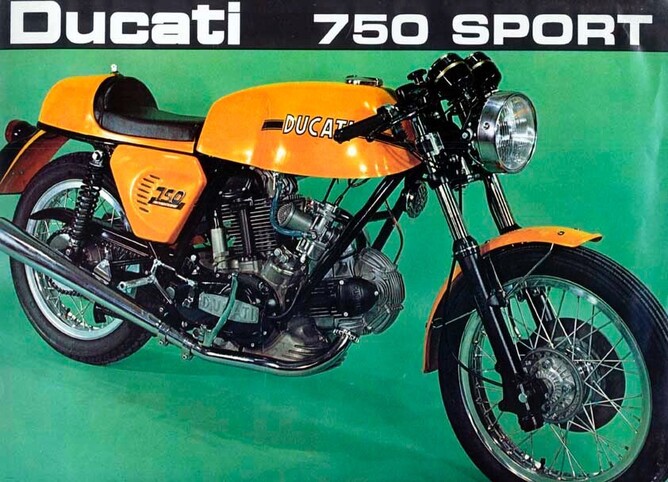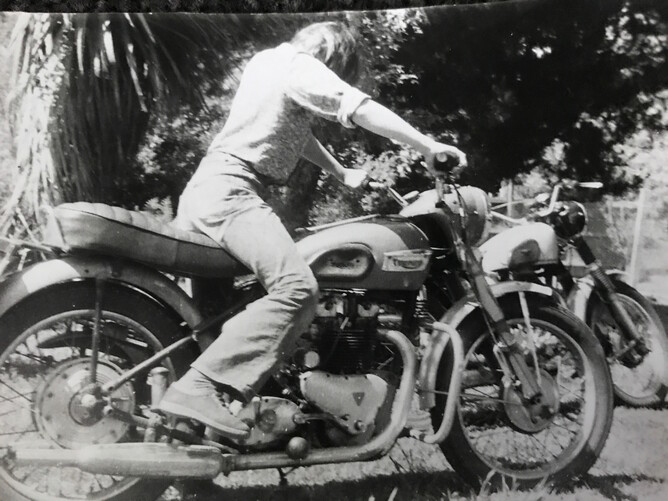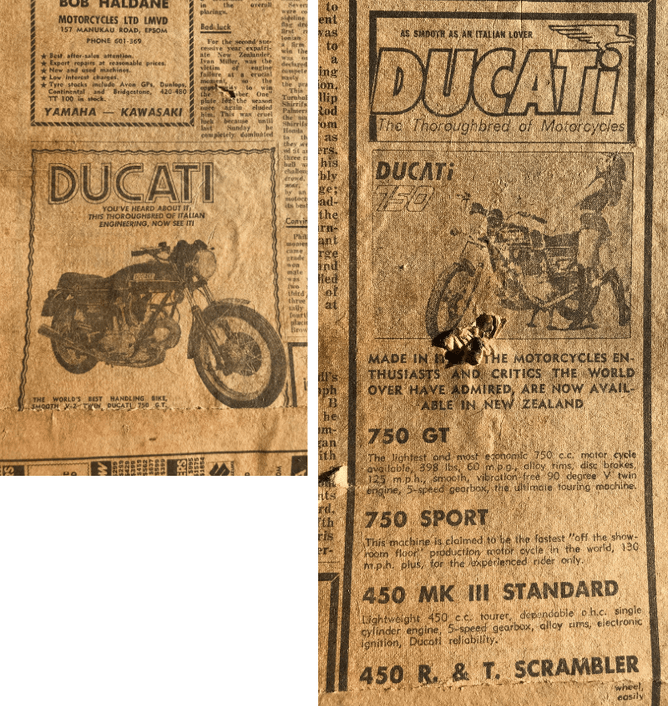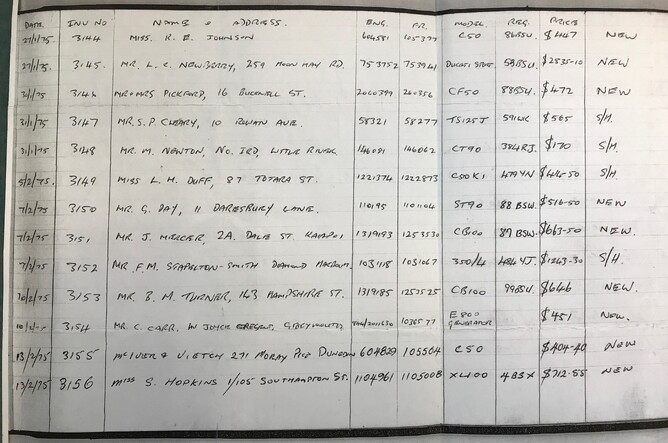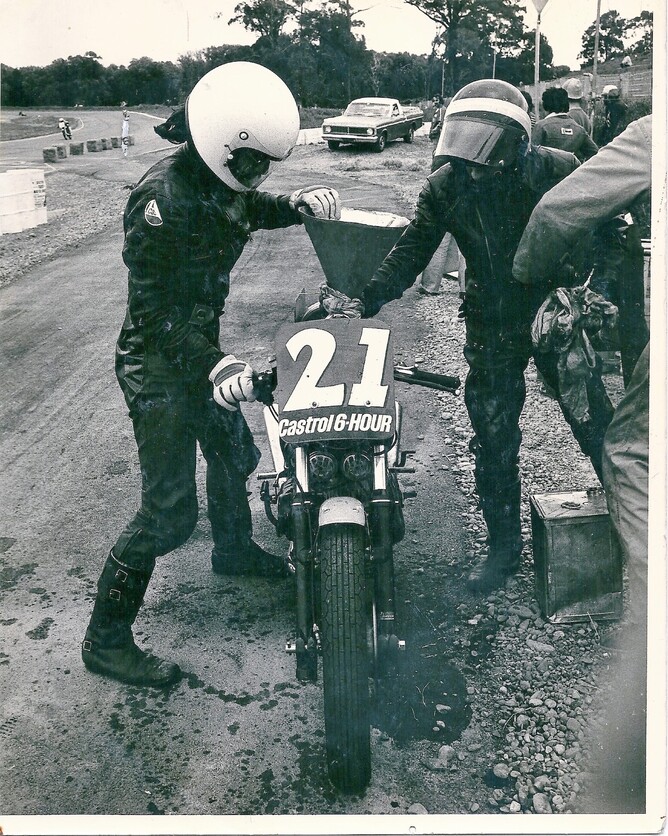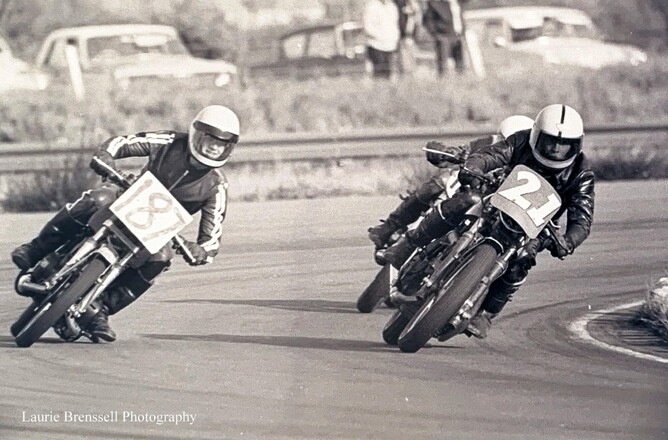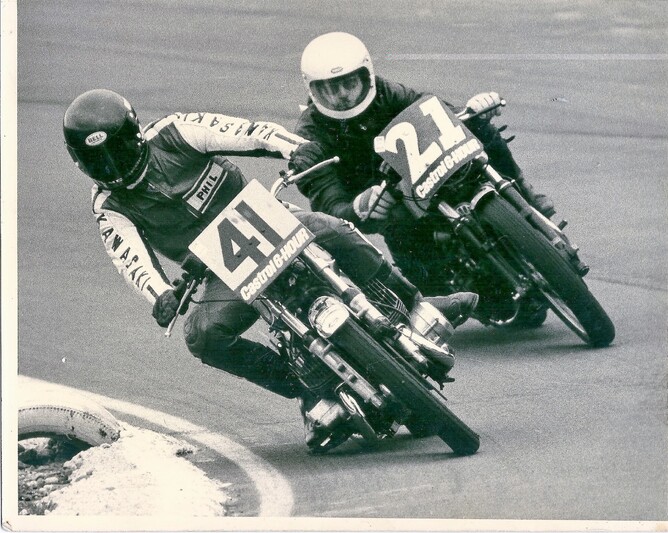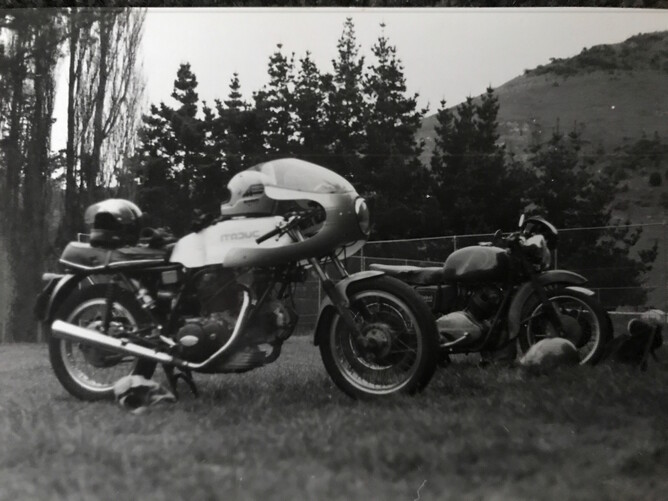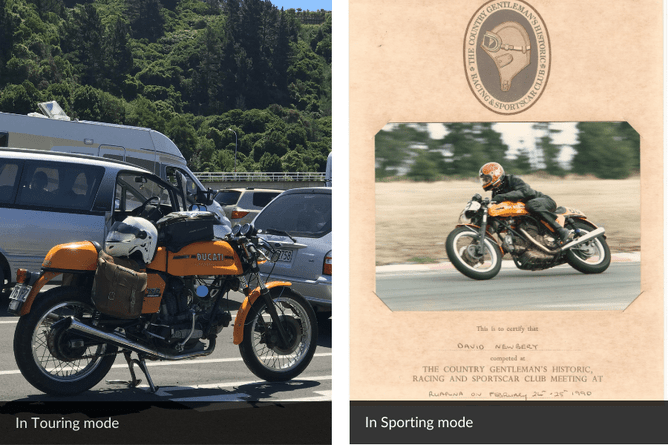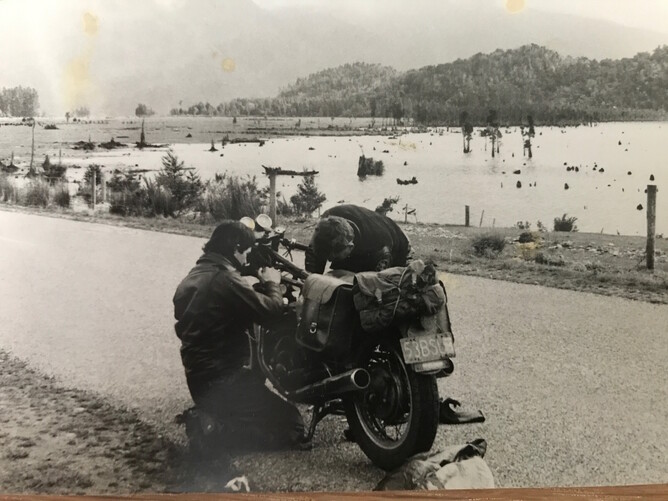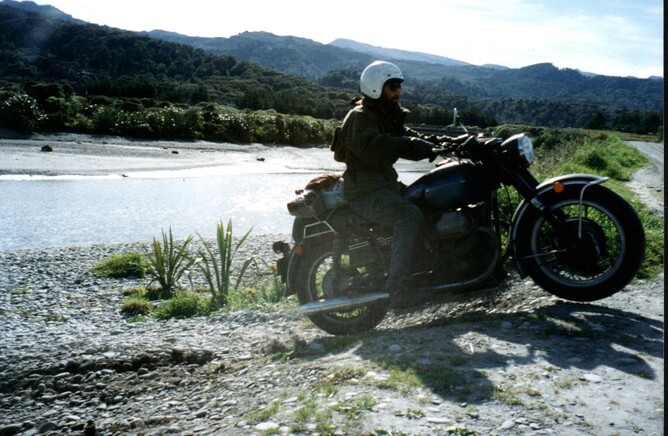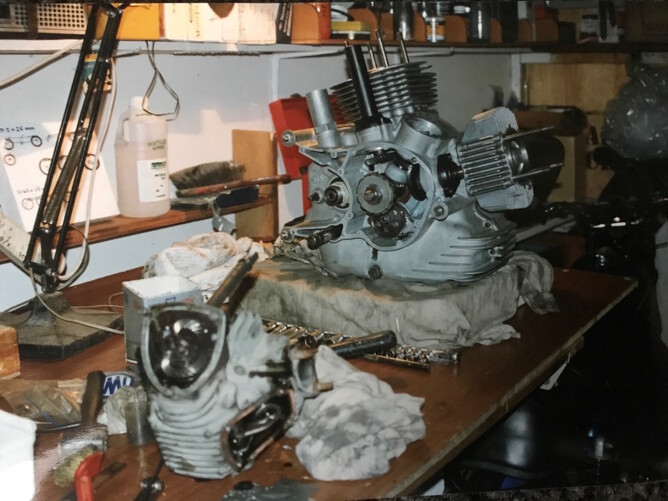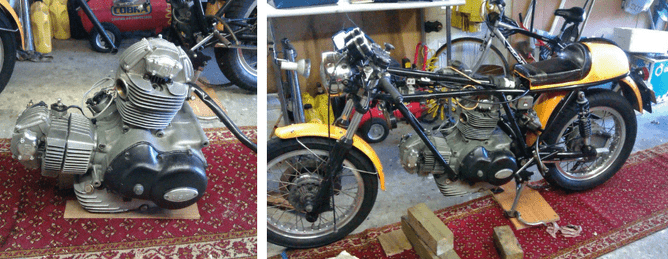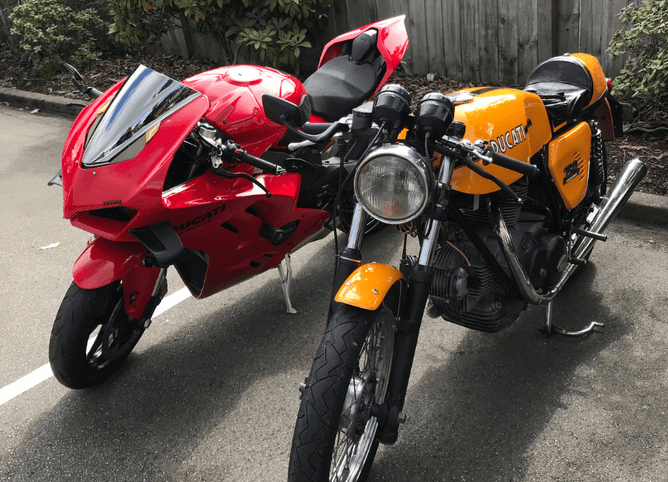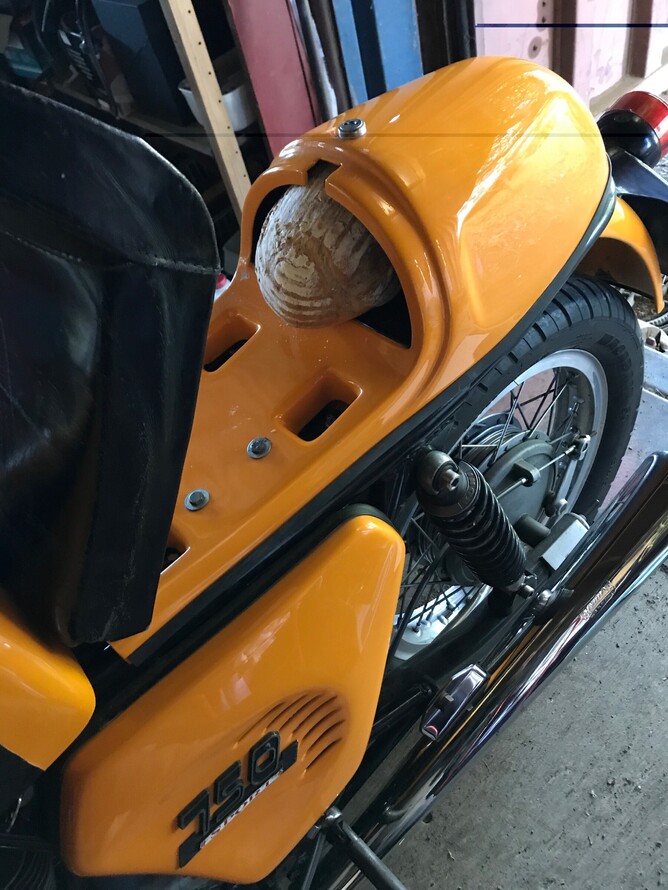That old Ducati 750 Sport, what's the story !
✍️&📸 David Newbery
I’m not the person to give you a history of Ducati in New Zealand, which no doubt would be quite a story, but I can tell you all about this particular Ducati.
It all started in 1973 as a poster dream of a 16-year-old lad with a keen eye for all things mechanical; his name was Lionel, he was my big brother. Motorcycles soon became the focus and they started to accumulate in the shed. A Matchless 500 single, a sprung hub 500 twin Triumph, and a box of bits that was apparently a 1914 Harley racer
A rider, not a polisher, Lionel would frequently push the Matchless to its limits. Stripped of all the unnecessary bits to reduce weight, this big 500 single banger would be thrashed around Banks Peninsula and stretched to its limits on the Tia Tapu straights, coming home with its header pipe literally glowing red.
Think 1974; traffic on the road at this time consisted mostly of Austins of England, Morris Minors, Anglias, and Vauxhalls. To have something roar past you at 90mph (145kph) was a rare and startling event.
The need for speed was strong in young Lionel. Clever engineers had managed to get some of the British bikes of the day to really cut the mustard, and new and bigger machines from Japan were starting to appear. But then, articles in Bike and Two Wheels magazines talked of a bike that outshone them all.
Ads saying things like “as smooth as an Italian lover,” claims of being the fastest off the showroom floor production bike in the world, and the sales clincher "for the experienced rider only." The decision was made: a 750 Sport it had to be.
All his other bikes were sold along with anything else worth anything at all, and with a little help from Dad, it was off to Bakers Honda in Christchurch, and the deal was done. On 27th Jan 1975, it cost $2835.10, a considerable amount of money when you compare it to other bike sales at the time.
I remember the day Lionel brought the Ducati home. There it was parked in the driveway, unlike anything we had ever seen before. Bright yellow (or is it orange—the ongoing debate) with black engine highlights. The highest point being the rev meter and speedo sticking up above the steering head, clip-on handlebars level with the tank, rear-set foot pegs, and a single racing seat. Those now-famous straight Conti exhausts and the 90-degree V-twin.
The grin on my brother's face said it all... the sound, the power, and it's like it's on rails. The brakes brake and the lights light (those of us who have ridden old British bikes know the significance of that last statement).
The first job was to run the motor in. No hardship, as it turned out, as keeping the revs below 5000rpm still meant a cruising speed of 120 kph, not forgetting this was back when the open road speed limit was 50 mph (80kph).
It wasn't long before Lionel found the company of a few other fast riders. From memory, these included a hot Norton Commando and a Yoshimura Kawasaki. The Norton was fast and light but not as fast and light as the Ducati. The Yoshimura had the power but corners were a bit of a challenge, those same corners the Ducati executed with ease, as if on rails.
Later that year or maybe it was early 1976, Lionel got together with some of the few other riders of Italian superbikes. It couldn't be a Ducati club as there was a 750S MV Agusta in the mix, so the first rendition of the ‘Italian Motorcycle Owners Club’ was born. Early editions of the IMOC newsletter ‘Motocyclismo’ are available online which talk about the exploits of these very bikes and their riders.
Although the Ducati was used as a commuter and a weekend ride, this was not its chosen destiny; the race track beckoned.
Over the next year or so, Lionel on the Ducati got to experience the thrill of the race, often riding the bike to the meeting with tools in a backpack, and all going to plan, riding home again at the end of the day. It was about this time the bike had its first facelift. A 750 Super Sport tank was fitted, a more curvaceous shape that allowed better positioning of the clip-on handlebars, and a bit more gas for longer rides and endurance races. It was painted Ducati silver with metallic silver-green stripes in the style of the Desmo 750 SS of the time. The intention was to fit a pair of Desmo heads to the Sport, and these turned out to be beyond the budget of a Post Office Telephone Exchange Technician pay packet. Preparation for an upcoming Castrol Six Hour race consisted of nothing more than whipping the heads off for a bit of port polishing and some new brake pads.
Back in the day, Ducati owners in Christchurch had little if any support, no Ducati-trained mechanics, and I've heard several stories of Ducati owners taking their bikes to the dealer for servicing and it coming back running worse. So the best and often only option was to do it yourself.
In the couple of years racing, Lionel had modest success on a limited budget compared to works teams and fellow sponsored riders. In the Castrol Six Hour race, he, along with his co-rider (whose name I have unfortunately forgotten), got a midfield placing, not bad considering they had to change a front tyre and re-bleed the brake mid-race. Their fuel stops were also a bit slow, not having any fancy overhead fuelling system, just a big funnel and a petrol can.
By the end of the 1970s, around 1977, the Ducati was starting to show the scars of a racing bike but was still going strong. About this time, my brother decided to go on his big OE, and on leaving, he handed me the keys and said, “Look after this for me, will ya?”
I guess that made me one ‘mother flippin’ lucky 17-year-old. I was still in my last year of high school, and my ride now was a Ducati 750 Sport! My first ride was a Solex (yes, one of those French cycles with the motor on the front wheel), then a Honda 50 step-through, then a 1955 AJS 500 twin. The step up from the AJS to the Ducati was of the biggest magnitude.
For the next six years, the Ducati was my main mode of transport. I fitted a dual seat to accommodate the girlfriend, and in spite of the rear-set foot pegs and clip-on bars, head-down-bum-up riding position, this bike was used as a commuter, a tourer, and a weekend blaster, and the occasional club day on a racetrack.
With a sleeping bag in a tank pack and some small saddlebags, the Sport made a better tourer than its appearances would suggest. I must admit, however, that recently long rides do bring out some aches and pains that weren't there 30 years ago. “I can't imagine what has changed?”
Ducati from this era got an unfair reputation as being unreliable, especially in the electrics department. This Ducati had a hard life, but it continued to be a good, reliable ride. Not faultless, I must admit; I had a condenser give up the ghost in the middle of nowhere, and one other time the fuse box decided to eject several of its fuses, resulting in me being towed the last few blocks home by a mate on his 350 RD Yamaha, most embarrassing.
The switchgear was primitive, but if kept clean and dry, it worked just fine. The 750 Sport, being a sport model, had no relays in the lighting circuit, so arcing in the dip switch could result in some frightening delays on dark nights between high beam and low beam. This was easily fixed though with the addition of some new-age relays crammed into the headlight shell along with the rest of the electronics, of which, of course, there is not a lot. Just lights, horn, and ignition; no indicators, no ECU, digital displays, or other control units.
I've heard it said of this model Ducati that “there are no pretty plastic bits covering ugly bits because there are no ugly bits” (best said in an Italian accent).
Anyway, after six years of me riding this bike here, there, and everywhere, my brother finally returns home from the UK. He came via an overland route London-Europe-Afghanistan-Pakistan-India-Australia-NZ on a 1972 V7 850 GT Moto Guzzi. This is a story for another day.
I ceremonially handed the Ducati keys back to him and started looking to buy a Ducati of my own. The Pantah 500 had just come on the market. Lionel and I started going on regular rides on the Sport and Guzzi, and on one of these trips, he said the Guzzi was now mine as I had helped him out with a bit of money when he was stuck in India (another story for another day). After a few months, however, he decided that the Guzzi was more his style these days, so we swapped.
This may sound like the deal of a lifetime, and given today's prices for these bikes, indeed it was, but at the time, the Ducati was getting pretty tired and was in need of an engine rebuild, which wasn't going to be cheap.
Over the next year or so, I rode the Ducati mostly just on weekends, but eventually, it started to puff a bit of smoke and then developed a slight knock. At first, I thought it was just the clutch housing or some such thing, but after stripping the motor down, I was surprised to find the big end bearings somewhat buggered. I rebuilt the engine, but it wasn't the same after that; it felt down in power and wasn't as smooth as it used to be.
I then went overseas on my big OE, and the Ducati sat in the garage, getting very little use for about ten years.
I returned to NZ in the early 1990s and decided it was time to get the Ducati back to its former glory. I returned it to its original yellow/orange colour scheme, stripped the engine down again, new main bearings, got the crank balanced, and with the help of Neil, a mate who knows about these things, got it all shimmed up and back together. It actually took me a few years to get it all sorted, and I sent the heads to a chap in Palmerston North to set up after seeing how well the 900SS bevels he had worked on did in a classic race meet at Pukekohe.
I also had to get the tank repainted after the fibreglass started to delaminate, possibly due to mistakenly filling it with bio-gas one time and partly due to a poor repair job to the tank in the past. The colour was matched to the front guard, which was, and still is, original. This way, there can be no debate about it being the right shade of yellow or orange.
After a bit of fettling and tuning, I finally got the Sport to where it is today. Not a showpiece, but a rider. Sadly, my brother never got to ride the Sport again after its rebuild as he died in 2016.
The Sport drew a lot of attention at the recent NDR, an event I decided to join at the very last minute. I remain amazed that this bike, at 50 years old and eligible to join runs with the Vintage car/bike club chaps but can still hold its own and not be left behind on a 21st-century Ducati run. Will you still be riding your Panigale in 2074?
As a side note, I noticed the other day that a loaf of Italian ciabatta fits perfectly in the seat of the Sport... those clever Italians...
Keep the shiny side up,
David Newbery.
